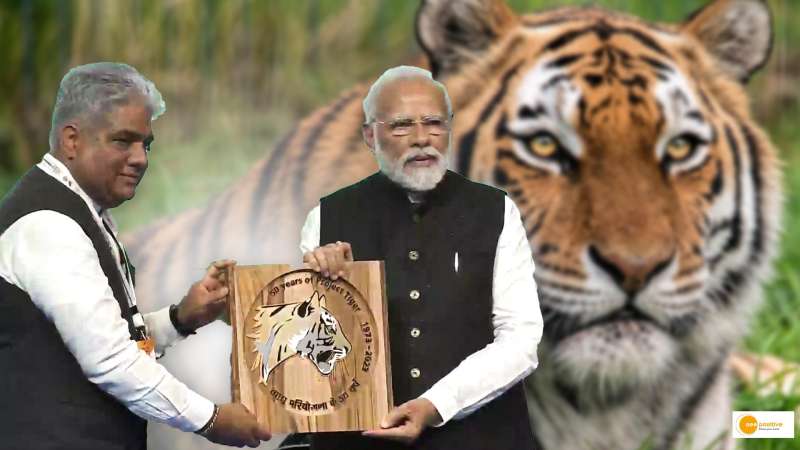

In a bid to end poaching and illegal wildlife trade, India’s Prime Minister Narendra Modi launched the International Big Cats Alliance (IBCA) on April 9. The Alliance aims to focus on the protection and conservation of seven major big cats of the world, namely Tiger, Lion, Leopard, Snow Leopard, Puma, Jaguar, and Cheetah. The launch of the Alliance coincides with the 50th anniversary of Project Tiger, which was launched by the then Prime Minister Indira Gandhi in 1973.
India’s Success in Tiger Conservation to Garner Global Support
The three-day Indian Conservation Conference (ICC) in Mysuru will showcase India’s success in tiger conservation to garner more political and public support. The Prime Minister will also release the latest figures of the country’s tiger population during the event. With a current population of 2,967, India harbors more than 70% of the global wild tiger population. Moreover, the tiger population in India is increasing at an annual rate of 6%. India doubled its wild tiger population in about 12 years between 2006-18.
The Launch of the Alliance Coincides with 50 Years of Project Tiger
The commemorative function in Mysuru will also witness the release of a Rs 50 coin to mark the completion of 50 years of Project Tiger. The initial coverage of the project included nine tiger reserves spread over 18,278 sq km. It has expanded to 53 tiger reserves covering more than 75,000 sq km (approximately 2.4% of the country’s geographical area) of tiger habitat. The tiger population increased by 33% from 2,226 in 2014 to 2,967 in 2018.
The Alliance Aims to Protect Seven Major Big Cats of the World
The IBCA aims to curb poaching and illegal wildlife trade by protecting and conserving seven major big cats of the world. The Asiatic lion population reported an increase of nearly 29%, from 523 in 2015 to 674 in 2020. On the other hand, the widely distributed leopard population saw an increase of over 62%, from 7,910 in 2014 to 12,852 in 2018.
During his visit to the Bandipur Tiger Reserve, the Prime Minister will interact with frontline field staff and Self-Help Groups involved in conservation activities. He will also visit the Theppakadu Elephant camp in Mudumalai Tiger Reserve and interact with mahouts and kavadis of the elephant camp.
In conclusion, the launch of the International Big Cats Alliance and the release of the latest figures of the country’s tiger population mark a significant milestone in India’s efforts to conserve its wildlife. The success in tiger conservation will not only garner global support but also inspire other countries to take similar initiatives to protect and conserve the world’s endangered big cats.


